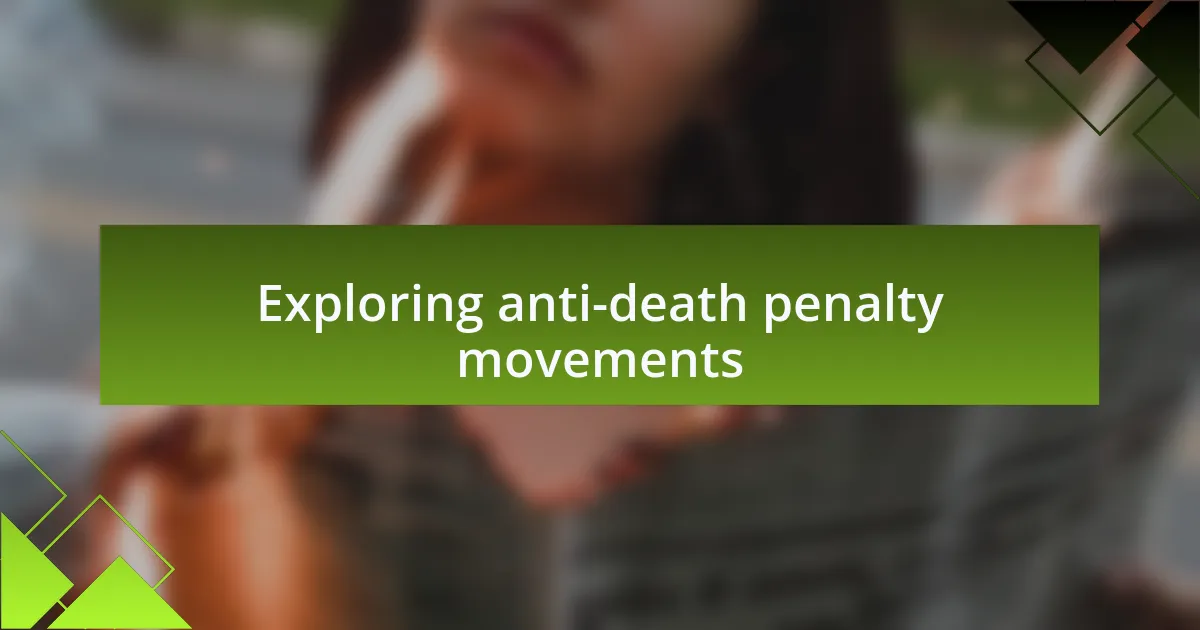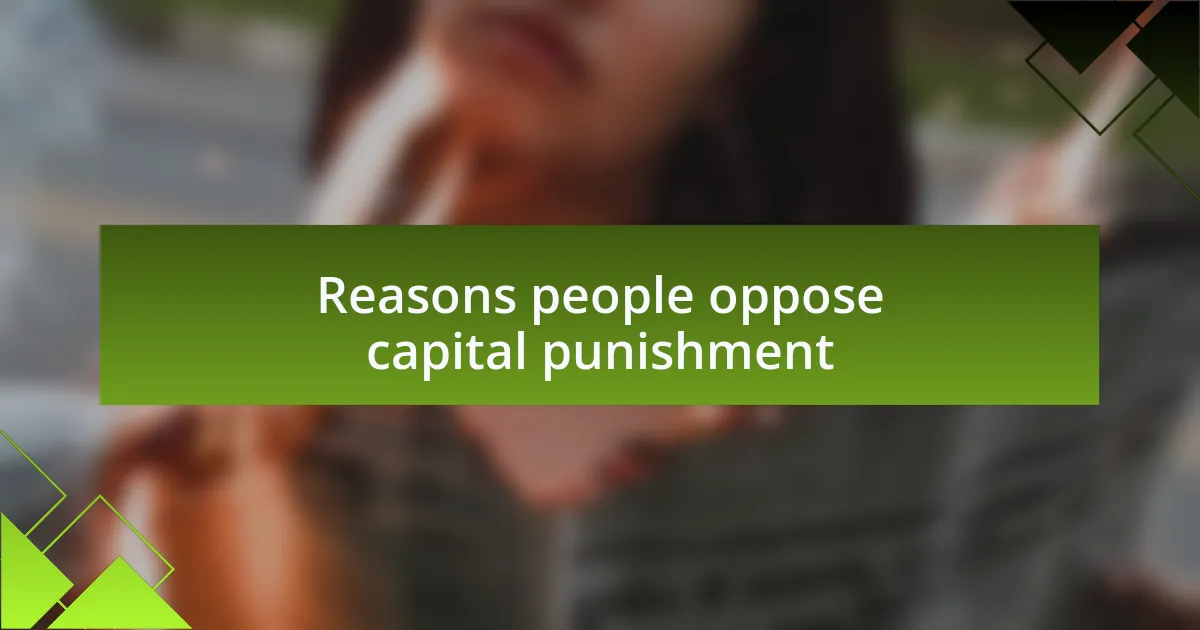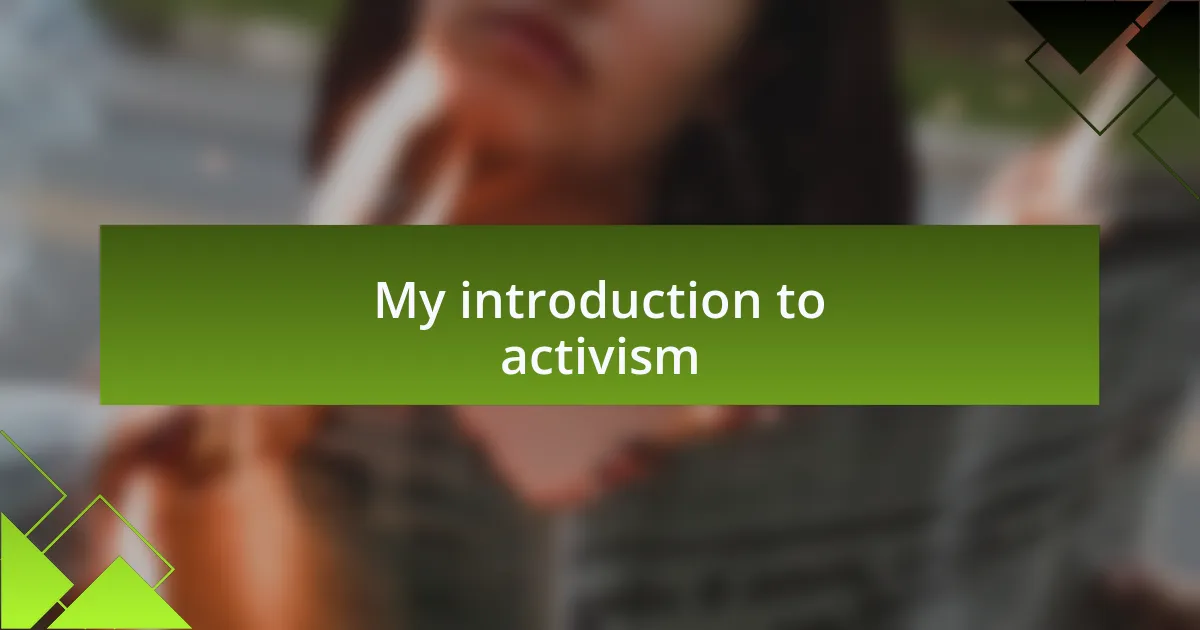Key takeaways:
- The death penalty has a profound emotional impact, affecting not just those on death row but their families and communities, creating a pervasive atmosphere of fear and mistrust.
- Anti-death penalty movements leverage personal narratives and community engagement to raise awareness about wrongful convictions and the injustices of capital punishment.
- Opposition to capital punishment stems from concerns about its irreversible nature, disproportionate effects on marginalized groups, and moral implications regarding state-sanctioned killing.
- Effective activism includes storytelling, community dialogue, and utilizing social media to mobilize support and foster understanding of the death penalty’s consequences.
Understanding the death penalty’s impact
The death penalty lingers in our society like a shadow, affecting not just those on death row but their families and friends as well. I remember a conversation with a mother who visited her son weekly, grappling with the harsh reality that each visit could be the last. How does one reconcile the hope of life with the looming threat of execution?
Beyond the individuals directly involved, the death penalty ripples through communities, instilling a pervasive sense of fear. There’s an unsettling question that often arises: does capital punishment truly deter crime? In my experience speaking with community members, I’ve found that many believe the penalty doesn’t contribute to safety but instead fosters an environment filled with tension and mistrust.
Moreover, the financial burden of maintaining death penalty trials often surprises those unaware of the costs. I recall attending a town hall meeting where local officials hesitated to allocate funds for education, yet they justified exorbitant expenses for capital cases. The irony struck me hard—what kind of justice system prioritizes execution over education? This contradiction reveals the profound impact the death penalty has not only on its intended subjects but on society’s values deeply.

Exploring anti-death penalty movements
Anti-death penalty movements have emerged as powerful forces advocating for justice and human rights. I recall my first rally, where the energy of passionate voices filled the air, each sharing their stories of loved ones wrongfully sentenced to death. The emotional weight of those narratives reminded me that activism is not just about statistics; it’s about real lives and the profound injustices they face.
The efforts of different organizations show the diversity within the anti-death penalty movement. For instance, I once collaborated with a local group that focused on educating the public about wrongful convictions. It was eye-opening to see how many people were unaware that innocent individuals have been executed. This ignorance creates a dangerous complacency, making it crucial for us as activists to bridge that knowledge gap and foster deeper conversations about the implications of capital punishment.
One especially poignant moment for me was when I listened to a survivor of a family member executed by the state. Their grief and anger were palpable, and it drove home the reality that the repercussions of the death penalty last generations. These personal stories are invaluable for rallying support and emphasizing that the fight against the death penalty is ultimately a fight for humanity itself. How can we stand by when the stakes are so incredibly high?

Reasons people oppose capital punishment
Many people oppose capital punishment due to its irreversible nature. I remember chatting with a fellow activist who shared a heart-wrenching story about a man exonerated after spending years on death row. His freedom came too late; the state had already taken away years of his life, a grim reminder that once the execution is carried out, the chance to correct a mistake is lost forever.
Another reason people stand against the death penalty is the disproportionate impact it has on marginalized communities. During a panel discussion, I encountered a woman who advocated passionately for those who lack the resources to defend themselves adequately. She argued that systemic inequalities often lead to unfair trials, leaving vulnerable populations exposed to a flawed justice system. How can we allow such a biased approach to determine life or death?
Furthermore, there’s a moral argument that weighs heavily on many minds. I once participated in a debate around the ethical implications of the state taking a life. The thought that killing could ever be justified, even as a form of punishment, left me unsettled. It raises a critical question about the kind of society we aspire to be. Shouldn’t our focus be on rehabilitation rather than retribution?

My introduction to activism
Activism found me unexpectedly. I recall walking past a rally against the death penalty, drawn in by the passionate voices and the sea of hopeful faces. It was at that moment I realized that standing by silently was no longer an option for me. I wanted to be a part of this movement, to lend my voice to the voiceless.
As I started to engage with fellow activists, I became aware of the deeply personal stories that fueled our collective mission. One evening, a friend shared her family’s experience with the justice system, detailing how a false accusation nearly led to tragedy. Listening to her filled me with anger and determination. I couldn’t help but wonder: what if that could happen to someone I care about?
With each meeting I attended, my understanding of the issue deepened. I remember a community gathering where we were encouraged to share why we were there. I took a breath and spoke from my heart, expressing how the thought of an innocent person facing execution haunted me. In those moments, I felt a profound connection to everyone in the room. It became clear to me that activism wasn’t just about fighting against a system; it was about building a community of empathy and support.

Strategies for effective activism
One effective strategy in activism is harnessing the power of storytelling. I’ve found that sharing personal experiences or real-life stories of those affected by the death penalty creates a strong emotional connection. For instance, at a local gathering, I recounted the story of a man wrongfully convicted, painting a vivid picture of his anguish. As I shared this, I noticed heads nodding and eyes welling with tears; it reminded me how storytelling can mobilize hearts and minds.
Another important tactic is fostering community engagement. I remember organizing a small event where we invited people from varied backgrounds to discuss the death penalty. It was fascinating to witness how open dialogues allowed others to share their thoughts and experiences. This exchange of ideas not only broadened our understanding but also strengthened our collective resolve. Have you ever experienced that moment when a conversation opens your eyes to new perspectives? It can be enlightening and empowering.
Leveraging social media as a tool for activism is also vital in today’s digital age. When I first posted about a recent execution on my social platforms, I was amazed at how quickly the message resonated, sparking both passionate discussions and increased awareness. The beauty of social media lies in its ability to transcend barriers; it can connect like-minded individuals, amplify voices, and share vital information. Have you considered how your online presence could contribute to meaningful change? I urge you to explore that power.